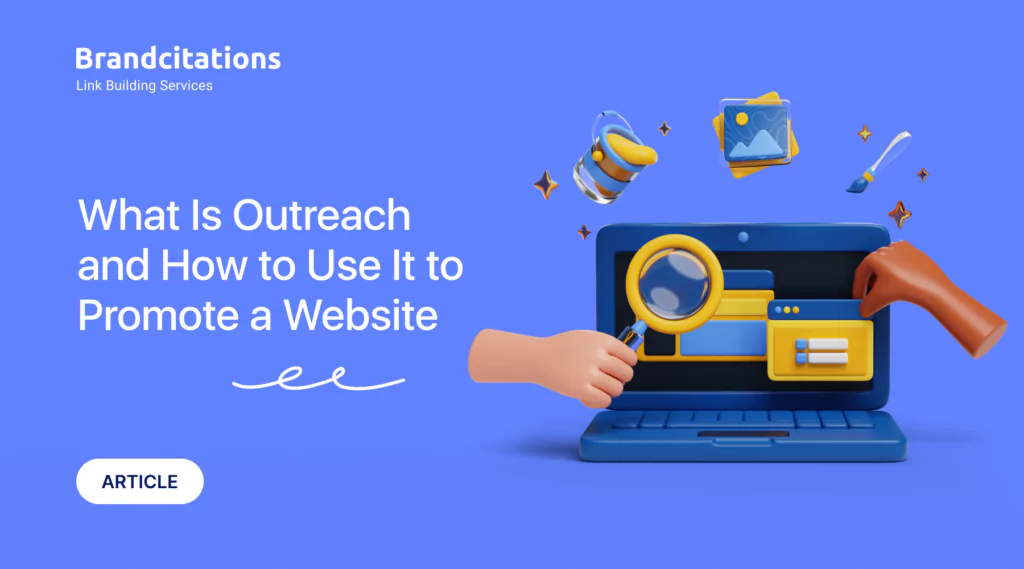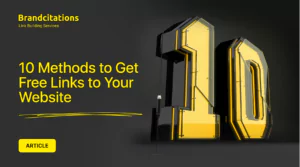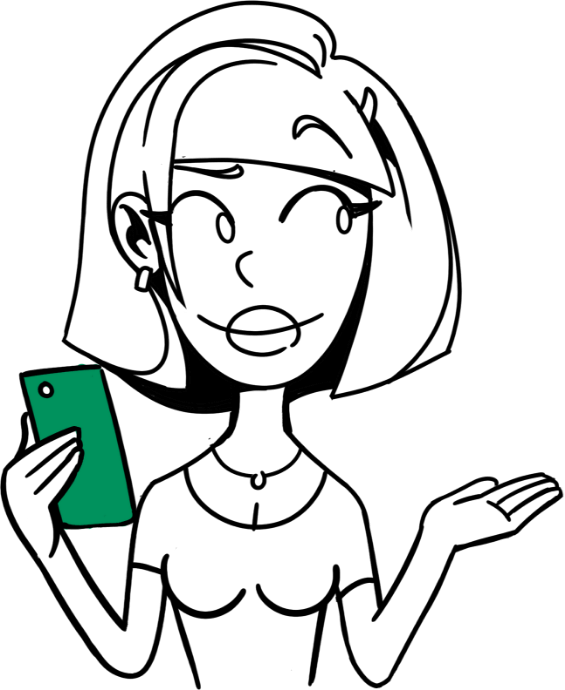What Is Outreach and How to Use It to Promote a Website

Building a strong backlink profile is one of the top priorities when working with informational and commercial projects in any niche. Since there are many link-building techniques, the optimizer should leverage as many as possible to outperform competitors and protect the site from penalties.
Webmasters usually opt for the simplest methods: links from directory sites, social media profiles, forum links, etc. Few go as far as guest posts — let alone outreach. The challenge is that without experience, it’s difficult to develop a cost-effective strategy for acquiring high-trust backlinks.
In this article, we’ll explore one of the most complex link-building techniques. We’ll explain why outreach is essential for website promotion, how to communicate with site owners, and how to streamline the process.
- What Is Outreach?
- Why Your Site Needs Outreach
- What Are the Types of Outreach?
- Building an Outreach Workflow
- Collecting the donor list
- Selecting and analyzing sites for outreach promotion
- We define the appropriate type of outreach and adapt the content
- We learn to write effective emails and create chains
- We do not forget about content distribution on our side and the site’s side
- We leave a positive impression about the cooperation
- Whose Hands Will Build the Outreach Process?
What Is Outreach?
Outreach is a link-building strategy based on direct communication with other webmasters. It allows you to acquire trusted links from resources that don’t accept submissions from link exchanges or aren’t listed on such platforms at all.
One of the key benefits of outreach is that it helps boost brand awareness and attract targeted traffic. For instance, posting a short feature about an email marketing service on a well-trafficked webmaster blog can lead to interested users eventually becoming customers.
Outreach, along with forum links, guest posts, link insertion, and other link-building methods, is aimed not only at strengthening a project’s backlink profile but also at traditional PR. When an optimizer selects relevant platforms for promotion, the impact can be highly effective.
From an SEO perspective, outreach is a tool that enables placement on high-quality websites with strong authority and solid traffic. Many sites are not listed on link exchanges or don’t sell links at all, but they may agree to mention your website within the context of an article.
Many optimizers avoid outreach because obtaining backlinks through this method can sometimes seem nearly impossible — especially without experience in communicating with site owners or crafting a compelling commercial offer.
The formula for effective outreach consists of several components:
- a list of trusted donors,
- personalized email templates,
- tools for sending proposals and tracking key metrics,
- a budget for outreach campaigns.
If you think that collecting 10-15 platforms and sending a template letter is enough, you are greatly mistaken. Popular projects have a steady stream of placement requests and may refuse most advertisers. First, you need to establish contact, demonstrate your value, and only then can you leverage all the benefits of outreach.
Why Your Site Needs Outreach
Webmasters who haven’t fully explored the outreach process often assume that this method isn’t suitable for traditional link building. There’s a myth that it’s purely an internet marketing tool for promoting brands and products.
In reality, outreach is almost always used to obtain high-quality links from relevant sources. In essence, it’s rooted in classic link building. The additional exposure it provides is simply a bonus — one that optimizers don’t always account for when planning their campaigns.
Outreach can be used not only for SaaS platforms and other projects that offer tangible value to users. With a well-planned campaign, even a standard informational site can boost its visibility.
For example, let’s say you’ve created an infographic on how the travel industry is recovering from the pandemic and want to earn organic mentions. You compile a list of relevant platforms, send out personalized emails, wait for responses, and then publish your media content.
Both travel-related projects and their audiences benefit from this approach. The former gains added value through enriched content, while the latter receives important information in a format that’s easy to understand.
What Tasks Outreach Solves:
- Securing backlinks with a guarantee of permanent placement. If a project owner agrees to a paid mention, they commit to keeping it live for as long as the site exists.
- Increasing brand awareness. Sometimes this becomes the primary goal, and indexing the links is no longer a priority.
- Boosting link equity. Outreach enables you to connect with platforms that don’t follow the traditional «money-for-backlink» model. The effectiveness of outreach can be evaluated using backlink analysis tools.
- Protection from SEO link penalties. Links gained through outreach campaigns effectively diversify your backlink profile and, combined with crowd marketing, offer strong protection against increased scrutiny from ranking algorithms.
- Attracting a targeted audience. Placing mentions on relevant platforms can increase not only the trustworthiness of the referring site but also drive interest from potential users.
- Generating demand. Outreach is ideal for announcing new products or services. When visitors see the value in what’s offered, they are more likely to become customers.
If the primary goal of an outreach campaign is to obtain links from new resources, then only a budget for placement fees is needed. However, if the objective is to boost brand recognition, attract a new audience, or generate demand for a service, placements must be planned with a strong emphasis on site relevance.
Running outreach campaigns at scale is challenging. If the webmaster lacks prior experience, the initial phase will mostly involve gaining valuable insights. In the best-case scenario, it may take several months to achieve a positive response from 20–30% of the targeted websites.
The impact of outreach on SEO and marketing performance depends on the approach taken. If the optimizer does not carefully select platforms or clearly define which metrics to improve, the budget may be wasted. Even if they’re lucky enough to get mentions from trusted sources, that alone may not deliver the desired results.
It’s more effective to launch multiple campaigns, each focused on a specific goal — for example, one for boosting link equity and another for promoting products. While combining tasks is possible, proper segmentation is always beneficial.
Advantages of outreach:
- Growth of the backlink profile.
- Expansion of a loyal audience.
- Brand promotion.
- Customer acquisition.
- Opportunity to get links for free or at minimal cost.
- Fast return on investment.
Cons:
- Difficult to predict the outcome in advance.
- Time-consuming campaign preparation.
- High budget required for placements.
- No protection against link removal.
- High risk of wasted spending.
Pay attention to the last point in the benefits. Outreach, like forum links, delivers results much faster than other link building methods. When placed on popular sites, the target audience will discover a useful project or product that helps solve their problems.
Link indexing is also typically faster because trusted projects have bots that detect changes, update page versions in the cache, and add links to the database. In contrast, backlinks from directories and social profiles may take longer to index.
What Are the Types of Outreach?
Outreach can be divided into paid and conditionally free. The first method requires a large budget, especially if the project is promoted in competitive niches on international markets. The second method is typically used by webmasters who are running outreach campaigns for the first time.
The approach to using paid outreach is straightforward: compile a list of sites, create an email template, send out the emails, and then handle the feedback. If you can offer webmasters a good price for the link or agree to their pricing terms, the placement success rate will be high.
Conditionally free outreach is a game at the highest level of difficulty. It requires real value to offer webmasters and skill to craft an effective commercial proposal. Getting nearly free outreach links with this approach is challenging.
Let’s highlight several main methods of outreach:
- Guest posts. One of the most popular ways to get a backlink, involving the preparation of an article for an external site. Guest posting is a standalone link building method that is sometimes part of outreach campaigns.
- Link exchanges. This method works only if the project is interesting to other webmasters. It is based on the mutual placement of mentions with active links.
- Writing reviews. A labor-intensive way to get backlinks with a high risk of failure. If the service owner or editor doesn’t like the review, you won’t be able to secure a backlink.
- Video transcription. This method is very similar to the previous one but slightly different. The idea is to find a video from a local or global opinion leader, transcribe it, and suggest that the blogger include a mention.
- Product testing. If you’re launching a service or project that offers more than just articles, you can engage opinion leaders from your niche by offering free product testing. The result: increased brand awareness and an influx of your target audience.
- Resource Page. One of the simplest link-building methods, which involves sending a large number of emails requesting that the promoted site be listed as an information source or added to a list of useful resources.
- Information Partnership. Partnering with services in the same niche not only boosts visibility but also strengthens the backlink profile.
- Link Insertion. A unique link-building method that involves placing a link to the target site on an existing page that already has authority, traffic, and ranks in Google for relevant queries.
There are many outreach methods. You can use one or several popular tools and come up with unique strategies for backlink placement. It’s always better to avoid the well-trodden path your competitors have been following for years and instead find alternative routes.
We have a valuable resource covering 60+ link-building methods, with a strong focus on outreach and various campaign implementation approaches. Be sure to read it if you’re struggling to develop a link-building strategy.
Building an Outreach Workflow
Let’s say there’s a service for the self-employed that allows freelancers to manage tasks, keep financial records, generate reports, and receive payments from clients in different countries. Its key value lies in saving time on routine tasks.
The webmaster or SEO specialist then faces a challenging task, where the success of the project promotion depends on the quality of its execution. In such niches, local content marketing, guest posting, and outreach tend to work best.
Collecting the donor list
The first stage of outreach is selecting relevant platforms for placing backlinks.
If you don’t devote enough attention to this step, all subsequent efforts will be in vain. Many webmasters dislike routine tasks and prefer to rely on automation tools.
However, this approach carries a high risk of missing quality platforms that don’t always rank at the top for obvious keywords. Outreach is not just about DR and other link metrics — it’s primarily about turning a project into a recognizable brand and expanding its target audience.
The easiest way to create a list of donors is by analyzing competitors and search engine results.
Look at how the niche leaders have built their link strategies and note the sites where they are featured. Search results will also help expand the list of potential platforms for placing backlinks.
Selecting and analyzing sites for outreach promotion
The second stage of outreach is analyzing and choosing the most suitable platforms.
Simply compiling a list of sites and sending a template email is a dead-end approach. You need to thoroughly analyze the platforms, identify the highest-quality ones, and develop a detailed strategy. Taking the easiest route will yield minimal results.
The method for selecting outreach platforms depends on the campaign’s goals. If the aim is to boost link authority, the donor site’s backlink metrics take priority. If the goal is to increase brand awareness, even spammy or relatively new sites may be suitable.
At the second step, you will definitely need to expand the list of potential donors, as the analysis process often reveals less obvious projects that didn’t come up during the initial deep dive into the niche.
We define the appropriate type of outreach and adapt the content
The third stage of outreach is preparing high-quality content for the chosen outreach method.
Above, we already discussed that there are many approaches to launching outreach campaigns. Some webmasters excel with guest posts, while others use video transcriptions to get links on a thought leader’s blog or social media.
It is better to choose several methods to achieve at least a minimal result. For example, if success isn’t achieved with Resource Pages or information partnerships — product tests, link exchanges, reviews, and Link Insertion can come to the rescue.
Don’t forget that each outreach approach requires appropriate content. If you want to obtain a backlink in exchange for placing an infographic or video, you need to create high-quality media content. This is the only way to achieve a positive result.
We learn to write effective emails and create chains
The fourth stage of outreach is preparing email chains for effective interaction with webmasters.
Mastering the art of drafting outreach emails won’t happen in a few days. If possible, it’s better to enlist the support of an experienced email marketer who understands «deliverability», «open rates», and «email chains».
If you want to dive into email campaigns, prepare for challenges and routine tasks. Creating templates can be turned into an exciting quest, but technical tasks are inevitable. Automation tools solve some problems, but manual work is still necessary.
We do not forget about content distribution on our side and the site’s side
The fifth stage of outreach is content distribution.
Suppose a copywriter has written a useful review of a service for the self-employed, and now it needs to be distributed on relevant platforms. Content distribution — the process of spreading information through all available channels — comes to the rescue.
If the site being promoted has well-established content distribution, the reach will be wider. On the site where you plan to post a guest article or mention, the distribution process should also be in place.
When analyzing the list of potential donors, pay attention to their distribution methods. If the platform announces new posts across all social networks and encourages information partners to place mentions, the impact of placement on such a project will be much higher than on one where distribution is not organized at all.
We leave a positive impression about the cooperation
The sixth stage of outreach is expressing thanks for the cooperation (leaving a good impression).
If the interaction with the site went well, don’t forget to leave feedback about the cooperation. Even if you don’t plan to work with the project again in the future, it’s better to spend some time describing the positive experience.
Write a letter to the project owner, thanking them for their prompt response and quality placement.
Sometimes webmasters share their experiences of posting links on sites through their blogs to inform colleagues. Before publicly mentioning a site, make sure to ask the site owner for permission.
Whose Hands Will Build the Outreach Process?
There are several options for launching outreach campaigns. Each of them has its advantages and disadvantages, so it’s important to base the approach on the goals set by the site owner or client, if it’s about services.
If a webmaster wants to gain initial experience in direct link placement, it’s advisable to immerse themselves in all the processes. If necessary, part of the tasks can be delegated to speed up the learning process, but it’s better to understand how the chain works in order to quickly identify errors.
Web studios and marketing agencies often hire outreach specialists to provide services to clients. If you are planning to build a network of projects or start a service funded by investors, you will definitely need an experienced link builder. The average cost for such a specialist is around $1,000.
The most cost-effective option for promoting long-term projects is outsourced outreach. Specialists will analyze the site’s characteristics, develop a work strategy, and provide a guarantee against link removal.
Outreach links are excellent for diversifying your backlink profile and promoting highly competitive keywords. If you can’t scale link building on your own, it’s a good idea to turn to professionals and experience the powerful impact of quality backlinks.




